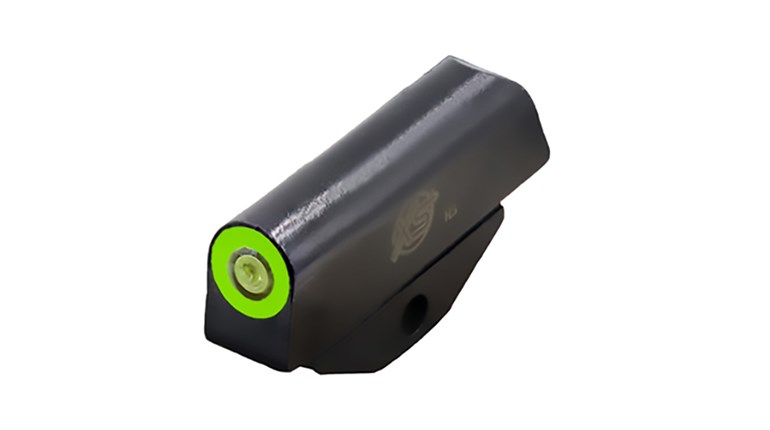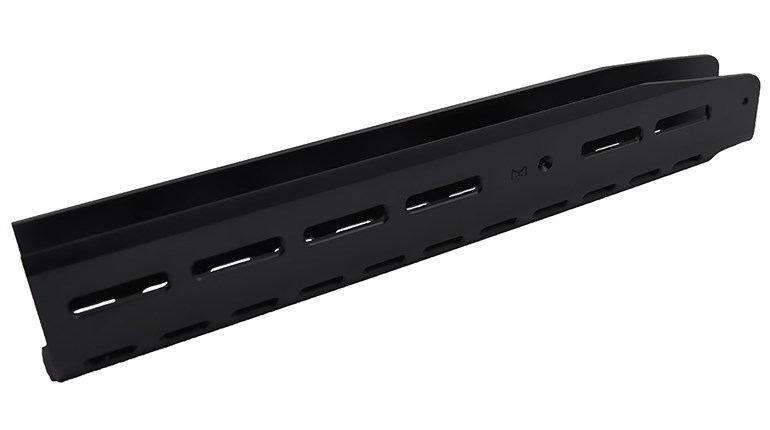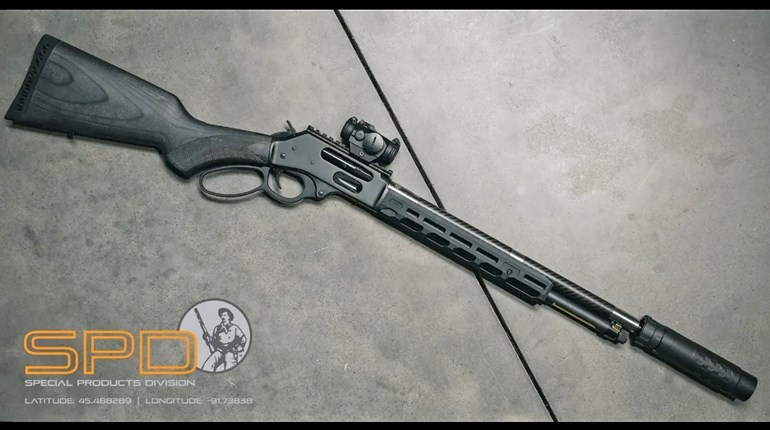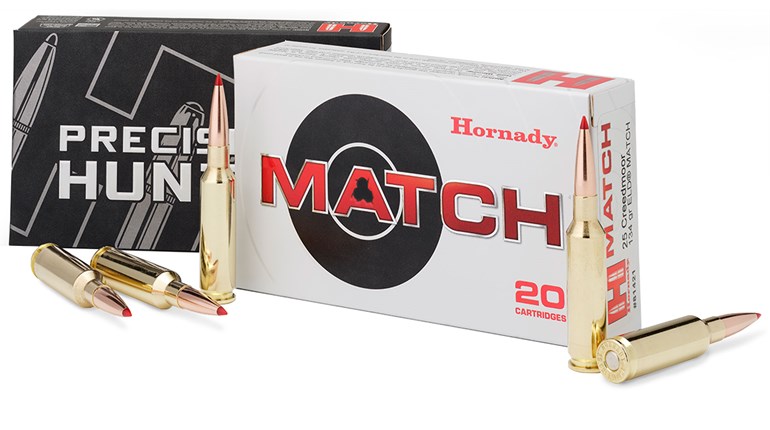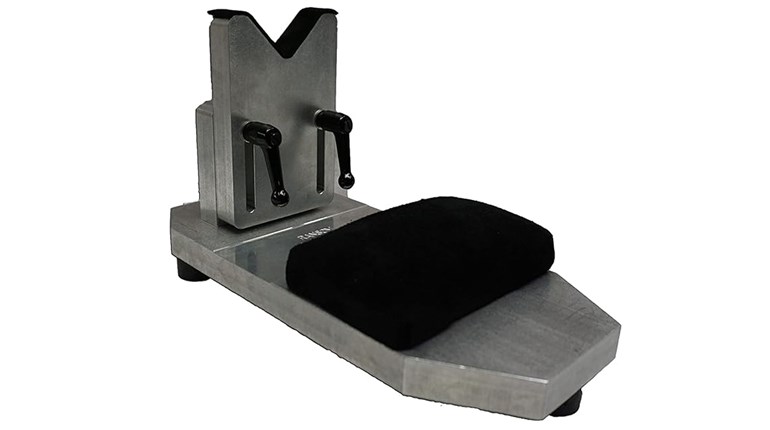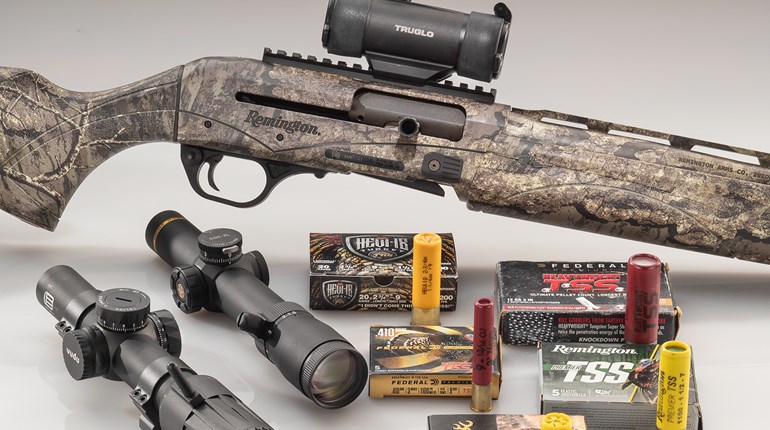
First, begin by verifying you have the correct type of sights for your slide. For example, you wouldn’t install a Heinie rear sight on a slide configured or “cut” with Novak dovetails.
Note: Even though special files exist make the installation process easier by widen the slide’s dovetails, it’s a safer practice to modify the cheaper part. (i.e. fit the sight to the dovetails instead.)
Start by placing the slide in a padded vise and lining the vise jaws with a sheet of paper or masking the slide with tape to keep the slide from becoming marred. Then, using a sanding stick or file, gently reduce or “break” the edges of the dovetail on both the slide and the sight. Doing so gives the sight an easy start into the dovetail, while simultaneously preventing the dovetail from acting as a broach and cutting up the sight during installation.
Begin by attempting to install the front sight. Chances are it won’t fit inside the dovetail. The solution is to narrow the sight dovetail, by filing on the bottom of the sight. To get an idea how much, measure the slide from the top of the slide to the bottom of the dovetail cut. Then do the same with the sight, measuring from the bottom of the dovetail to the bottom of the sight blade. The difference tells you the amount of metal that need to be removed from the bottom of the sight, without fear of removing too much material. (The area in question also has two raised lips going across it. Those can offer clues as you go.)
Using a clean and chalked 8-inch file, lay it flat on your workbench. Then, while holding the front sight between your thumb and index finger, gently pull the sight across the file toward you—taking care to keep both the file and the sight flat and even. After two or three passes, try inserting the sight until it fits in approximately half-way in the slide’s dovetail. (You want it to go on with some effort.) Go slow. Take it from me, it’s real easy to take one file pass too many. The last thing you want is a sight that falls through the dovetail.

If those raised areas on the sight base are completely filed away and the sight still won’t fit half-way, turn your attention to filing one of the sights angle faces, which is done in the same manner using a triangular-shaped dovetail file with safe edges. Take one pass at a time, then turn the sight 180-degrees and take a pass along the corresponding angle face. Check the fit, and slowly continue the process until the sight enters the dovetail 1/3rd to half-way. Next, drive it into place using a non-marring punch. (The XS brand slights I selected ships with a small synthetic one.) Whichever tool you use (be it a hammer, brass rod, a piece of wood or a sight pusher [the latter of which XS does not recommend] be careful because it’s easy to mar the sight or the slide with an errant hammer blow or misaligned tip.
When using the drift, take care to place the drift against the bottom edge of the sight’s dovetail— not against the sight blade, as the impact can damage any sort of tritium inserts, or sheer the blade off entirely. Tap the front sight into place until it’s centered. How can you tell it is? You can measure the sight from each side of the slide to the corresponding side of the sight. Or, there may be some sort of index on the top of the slide. (My Caspian slide has a small groove along the center of the front dovetail.)

From here you can do one of two things: You can apply a generous amount of thread-locking compound completely around the sight and allow approximately 2 hour for it to seep in and cure before whipping of the excess with a Q-Tip. Or, you’re installing the sights on an operational pistol you may opt to take the pistol to the range and fire a magazine to confirm your windage beforehand.
To install the rear sight, begin by making sure any setscrews are completely backed out. If your rear sight is a trapezoidal-style sight, so simply remove material from the bottom of the sight as described above until it begins to fit. If, however, the rear sight overhangs the slide behind the dovetail—like the Novak LoMount or select XS models—measure the height of the slide above the dovetail base, then measure the height of the sight from the bottom of the dovetail to the overhang. You may have to create more clearance by filing the flat of the overhang in order to make the sight fit.
With the slide assembly complete, now we can focus on installing the frame’s internal components.













